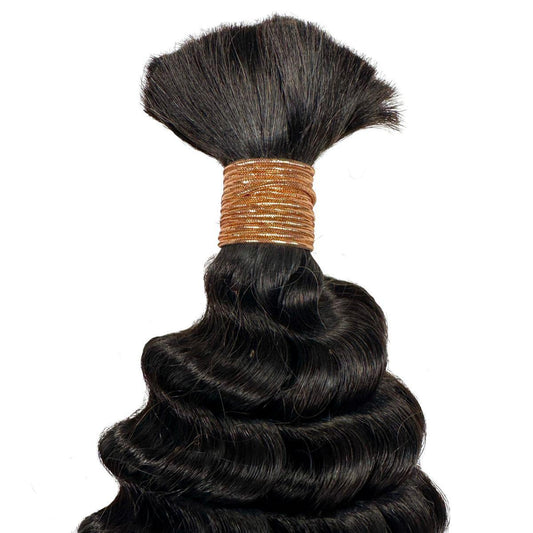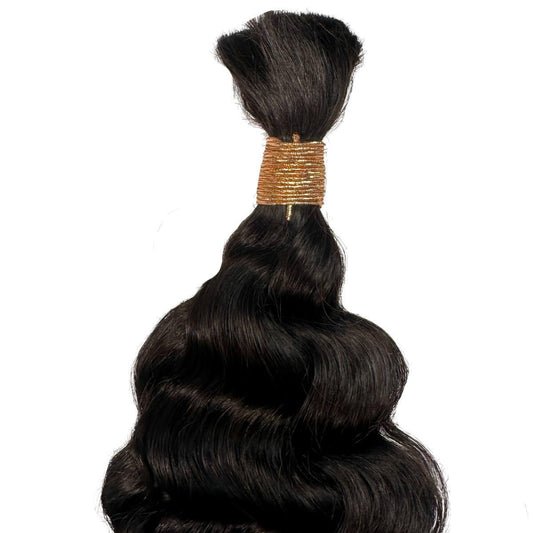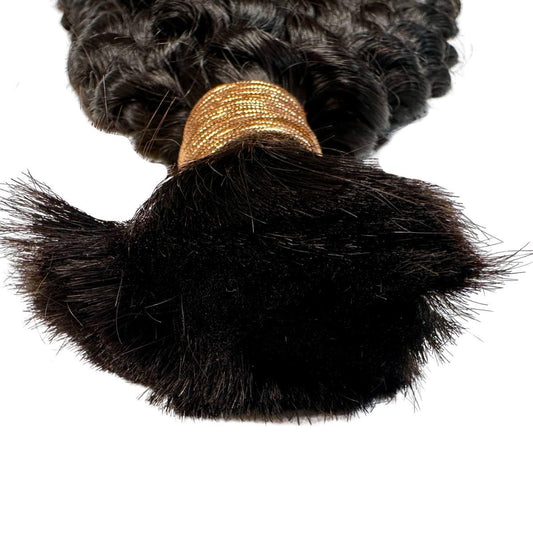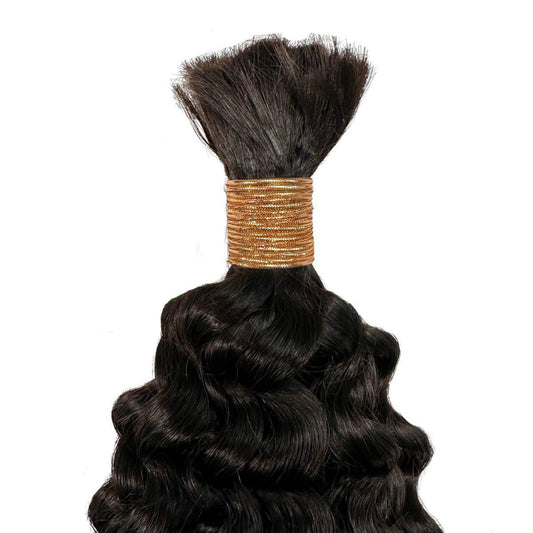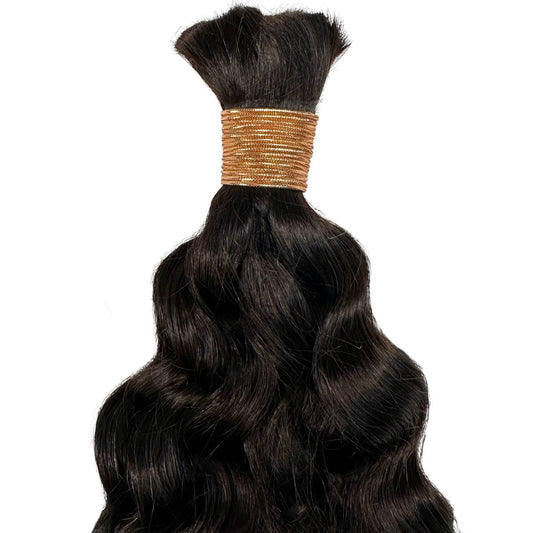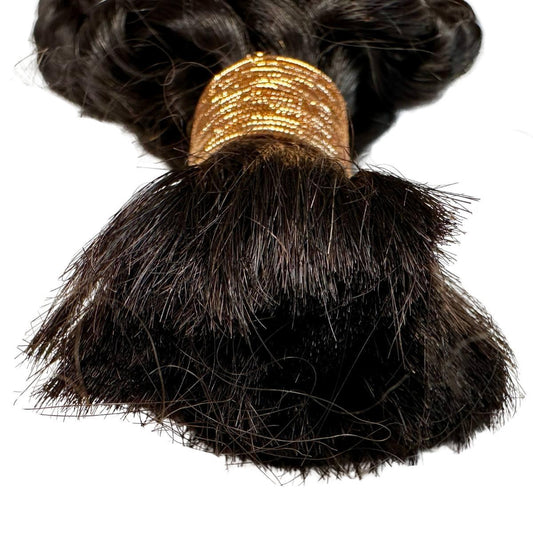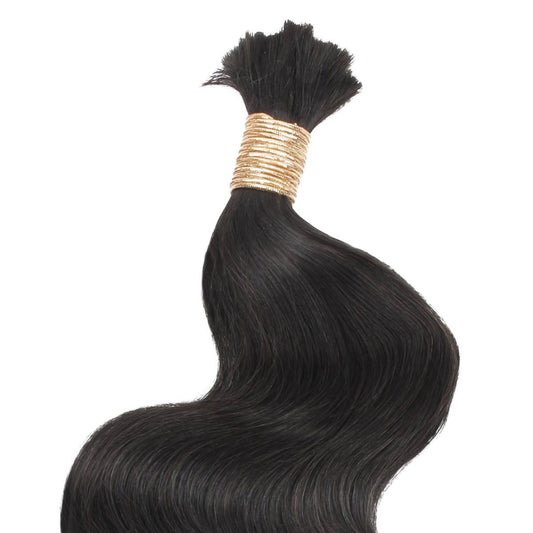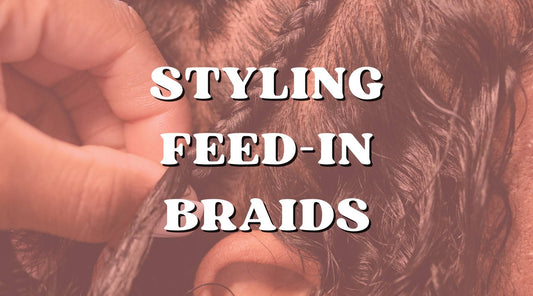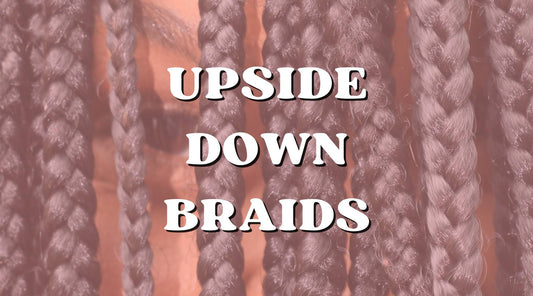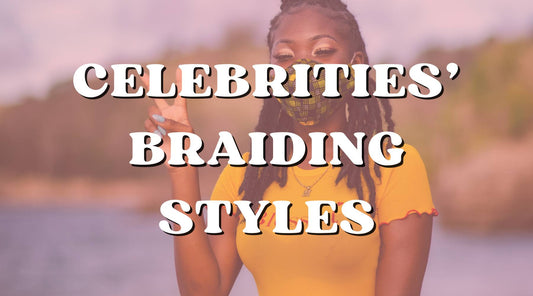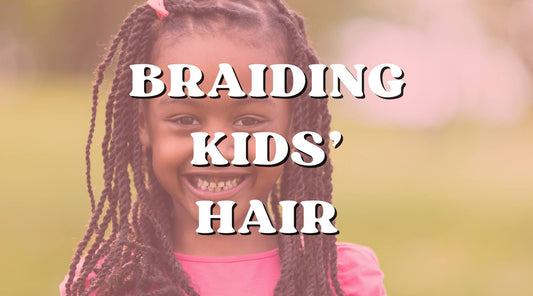1260 Memorial Drive
Atlanta, Georgia 30316
404-458-1330
Tools for Braiding Hair: Essential Accessories to Elevate Your Look!
Mikey MoranOne of the fun and stylish ways to switch up your look and personality is by doing braids.
Whether you're going for simple, laid-back styles or more intricate braid looks, having the right tools, accessories, and bulk braiding hair can save you time and help you get the exact result you want.
In this exciting guide, we will explore and learn more about the essential tools and accessories that can make your braiding time and experience less stressful.

Hair Braiding Essentials
Always remember to choose the hair braiding tools that will work best according to your hair needs and specifications to minimize natural hair damage and breakages and ensure the longevity of your hair. Let’s start and explore, lovelies.
1. Human Braiding Hair
The type of braiding hair that you use will affect your braiding technique and process. Choose braiding hair that is high-quality and will blend seamlessly with your natural hair.
Your personal preference and budget also play a significant role. You can purchase our human braiding hair from our website, featuring high-quality human hair bundles that are affordable and made out of pure human hair for that bold and natural look.
Our braiding hair is gentle on your scalp and strands and will elevate your look. It’s low-maintenance, too.
2. Shampoo Brush
For a seamless braiding experience, your hair and scalp need to be clean for precise partitioning and braiding. A shampoo brush is an essential tool that you will use to remove every inch of dirt and oil buildup on your scalp.
This tool is very effective since it will not only clean your scalp but also promote hair growth and blood circulation.
3. Denman Brush
This is another essential tool in hair preparation for braiding that you’ll use when washing and prepping your hair extensions or natural hair. It effectively detangles your hair during conditioning and helps hydrate your natural hair when it’s wet.
A denman brush breaks tangles, increases hair definition, lays frizzes, and gives wet hair definition and texture, ensuring that your hair is well-detangled and manageable.
4. Wide-Tooth Comb
When you’re conditioning and hydrating your hair strands and ends, you will require a wide-tooth comb to easily detangle and loosen your hair strands. Especially when working with extensions in popular shades like 30 or 27 color hair, this will cause less friction, less tension, and fewer tangles.
The wide gaps between the comb’s teeth and the large diameter make a wide-tooth comb a perfect tool for detangling your hair easily without experiencing breakages and splits.

5. Straightening Brush
After properly cleansing your scalp and gently moisturizing and hydrating your strands, you will need to straighten your hair extensions or natural hair for a nicer, neater working base for your braids.
A straightening brush smooths and straightens your natural hair or extensions without using a lot of heat. This creates a clean, manageable base and detangles as it straightens. And who doesn’t want their hair to be easier to work with while they’re trying to get that sleek, neat finish?
6. Braider’s Comb
A rat tail comb, afro pick, or braider’s comb is essential for neatly combing and parting your hair. These tools are gentle on your scalp and hair extensions or natural hair and will make those partitions more precise and neat, ready for the next step.
7. Hair Bands and Clips
When braiding your hair or using braiding hair extensions, you must section the hair into sizable and workable sections to make the work easier. You will then use hair bands, ties, or clips to gently hold and tuck away the unused hair for a neat working base.
Hair clips come in various sizes and styles, allowing you to choose the right one for your braiding needs. The clips will hold your hair securely, ensuring your braids are neat.
8. Braiding Hair Rack
To cut that braiding time, you can use a braiding rack. This tool will come in handy to assist you in prepping your braiding hair extensions in the desired sizes and volumes before you begin braiding.
9. Ring Pinky Parting Tool
You must use a pinky parting tool or a hair parting ring to create clear and precise partings while braiding your hair, especially when feeding in braid lines or stitching cornrows.
10. Magnetic Gel Band
When gripping the braids or the cornrows, you will require the gel band to hold your gel or hairpin in place when braiding your hair.

11. Trimming Scissors
After you finish braiding your hair, you will need to trim away the unwanted ends and flyaways to achieve that polished look.
Get scissors that are specifically meant for trimming hair extensions or for natural hair. Don’t use regular or household scissors to cut your hair since they will damage it, causing it to break and have more split ends.
12. Hair Serum
You can opt for a lighter hair oil or hair growth serum for moisture and proper hydration after braiding to avoid dirt buildup.
This will moisturize your scalp and add more shine. You can also apply it to your braiding hair before braiding, ensuring that the strands are well protected and moisturized.
13. Hair Spray
Spray your braids for extra moisture and shine. This will maintain your style and prevent flyaways.
14. Edge Groomer
Slaying and laying your edges will elevate your look. You will need an edge groomer to tame and lay your edges to be extra flat and sleek.

15. Styling Gel
A suitable hair gel will make your hairstyle pop more for that perfect hairline definition. Find a gentle gel that won’t cause much flaking on your hairline.
16. Hair Beads and Strings
To spice things up and elevate your unique look, flare up your braids or add that perfect finishing touch with accessories such as shell clips, metallic hair coils, hair beads, hair ribbons, micro beads, or strings.
17. Satin Head Wraps
When sleeping at night, it’s essential to protect your braids and scalp. Sleeping on a satin pillow or covering your hair in a satin scarf will protect your ends and scalp and retain moisture and hydration through the night.
18. Crochet Hook Braids
This is a must-have tool for individuals who want to achieve any desired look quickly. It allows you to easily and gently wrap your braiding extensions into your braids for that voluminous look.
For that short and seamless braiding technique, you can purchase our lovely deep wave boho braids.

Accessories for Braiding Hair
To wrap up our lovely discussion, it is evident that choosing the right tools and hair accessories is essential for you to achieve that trending and natural look.
Whether you prefer long or short hair, cleansing and hydrating your scalp and hair strands will help you have that clean and moisturized base.
Detangling with a wide-tooth comb will help you loosen any tangles and knots before starting braiding. Using a silk bonnet or sleeping on a satin pillow will protect your braids and hairline while retaining moisture at night.
Each tool serves a specific purpose in ensuring that your braids are flawless, and investing in the right hair tools and hair accessories and incorporating them into your braiding routine will assist you in creating stunning braiding styles while protecting and nurturing your mane underneath.
Get yourself a cute burgundy braiding hair bundle and slay it this season!
How to Braid Your Hair: Step-by-Step Guide
Whether you’re a beginner or just brushing up, here’s a simple breakdown to get those braids looking clean and polished:
Step 1: Start with clean, stretched hair
Wash, condition, and stretch your hair with heat or a no-heat method like braiding or banding. Dry, detangled hair makes braiding so much easier.
Step 2: Gather your tools and bulk braiding hair
You’ll need a rat-tail comb, clips, braid gel or edge control, and your preferred bulk braiding hair if you’re adding extensions.
Step 3: Part and section the hair
Use the rat-tail comb to create clean parts. Clip away the rest of the hair so you can focus on one section at a time.
Step 4: Apply braid gel or edge control
Apply a small amount to the roots and part lines to keep everything neat and help your grip.
Step 5: Add braiding hair (if using)
Feed in small pieces of bulk braiding hair as you go, blending it in gradually for a more natural look and less tension.
Step 6: Start braiding
Split the section into three parts and begin braiding close to the scalp. Keep even tension but don’t pull too tight.
Step 7: Seal the ends
Once you reach the end, seal with hot water (for synthetic hair), a rubber band, or by curling, depending on the style.
Step 8: Finish with mousse and oil
Apply styling mousse to set the braids and reduce frizz. Use a light oil on the scalp to keep it moisturized.
Frequently Asked Questions
What are the tools used for braiding?
You’ll need a rat-tail comb, sectioning clips, edge brush, and sometimes rubber bands or braid sheen to keep parts clean and the hair manageable.
What equipment do you need to braid hair?
To braid hair, you typically use a comb for parting, clips for sectioning, a spray bottle for moisture, and styling gel or edge control for grip.
What is used to make hair braids?
Braids are made using your natural hair or with added braiding hair like synthetic or human hair, depending on the style and length you want.
What do you put in your hair when braiding?
People often use leave-in conditioner, oil, or braid gel to keep the hair moisturized, smooth, and easy to grip while braiding.

